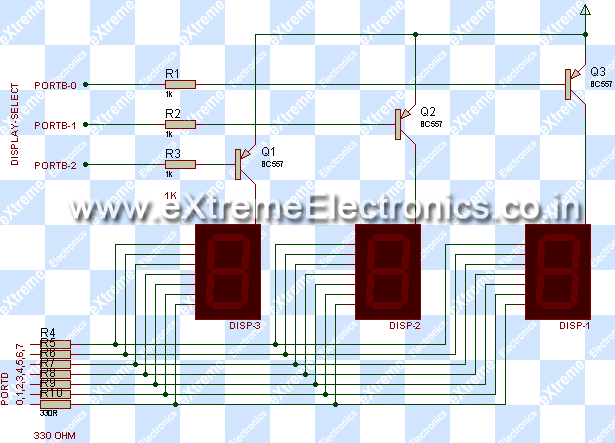Hi Friends, In last tutorial we discussed about Multiplexing Seven Segment Displays. So you must be very much familier with the therory. Now let us write the code and design a small project that will make you expert in using these displays in your own projects. We will make a system that can display any number between 0-999 using three of these displays. We will write a function Print() that we can use on own later projects to easily write integers onto displays. Once we have successfully tested this function we can add to to any project without any problem. This concept of code reuse will make bigger project both easy to make and far less painfull. In this sample project we will test our function by using it in a loop to print all numbers from 0-999.
for(i=0;i<1000;i++){ Print(i); Wait(); }
The Circuit Diagram.
You can use a Home Made AVR Devboard or a low cost xBoard MINI to experiment with seven segment displays. In the picture I have used xBoard MINI. The project is designed with ATmega8 but can easily be done through ATmega16 or ATmega32. The crystal value is not so critical for this you can use 12 MHz or 16 MHz it would only change the refresh rate of displays.
Fig - Multiplexed Seven Segment Displays. |
The Code
© 2011 Electroclub


 04:01
04:01
 technoclub
technoclub




0 comments:
Post a Comment